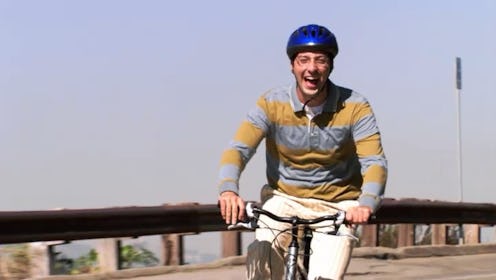Entertainment
'Arrested Development' Needs To Get Back To Basics

Overall, the general population of longtime Arrested Development fans will take to the news of an incoming season with delight. As the fifth batch of episodes closes in on its newly announced 2016 release, we’ll see more and more celebratory Tobiasisms, affectionate character rankings, and flash mob chicken dances come into play. But, accompanying any thought on the season yet to come will doubtlessly be one probing concern: “I hope it’s better than Season 4 was.”
Netflix’s first go at Arrested Development was hardly a total failure, balancing callbacks and original gags effectively to provide plenty of good laughs. Of course, there were issues with the season. First and foremost, a shooting schedule that disallowed scenes featuring the Bluths all together. While Mitch Hurwitz and co. might have assumed that individual glimpses at GOB, Lucille, Buster, George Michael, and the rest would, in tandem, play an apt substitute for full family sequences — all parties were represented, after all — it became clear early on in Season 4 that the parts were not adding up to the whole. What we needed was to see the entire unit operating in its beautiful toxic harmony. But, of course, we also faced problems with the very way that the season's story was being told.
Season 4 carried a dominating structural issue, one that broke into effect the moment the first episode kicked off, midway through an explanation of the troubled Cinco De Cuatro festivities that landed each character in a heated conflict (and that which possibly killed Lucille 2). Already, things were way too convoluted, and this didn’t exactly peter out over the course of the episodes to come.
Arrested Development never fostered what you’d call a “simple” structure, at least by the standards of traditional comedy television. But, in delivering its story linearly in the first three years, the show managed to avert some of the frustrating hems and haws that came with its chronology-jumping methodology. With so much concentration devoted to understanding what was happening when — only to inevitably be undercut by the reveal that what we thought was happening at any given point was in fact only a façade — we weren’t free to engage blissfully with that which we had come to expect from Arrested Development: anarchic comedy.
Yes, although the show built its madcap reputation on the twists and turns of an early Jack Lemmon farce, its upping of the ante in these areas actually yielded counterproductive results. So invested was Arrested Development’s fourth season in being multitiered with zaniness that it lost the emphatic flavor of its old organic lunacy. No longer was it rhythmic poetry; it became only impressive math.
As conflicting shooting schedules are a tough thing to overcome, we might yet have another season of disparate Michael, Lindsay, George, and Maeby scenes — something to lament, for sure. But if Hurwitz and his team can remember one simple rule, the splitting of the Bluths might not read as such a treacherous idea: keep it simple. Go back to the basics of what made Arrested Development funny. We don’t want to hop from one slice of one character’s story to another, only allowed to put them together at the season’s end. We want to watch these characters get themselves into, out of, and back into messes organically — from beginning to end. The Bluths are strange, interesting, and complicated enough as is; we don’t need mess with structure to make them so. In fact, it doesn't work out as well when we do.
Images: FOX